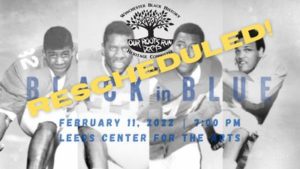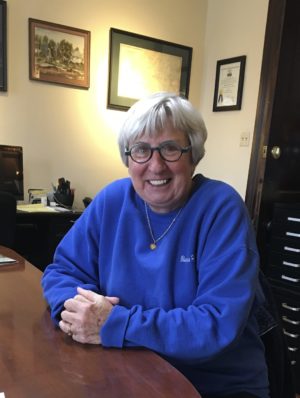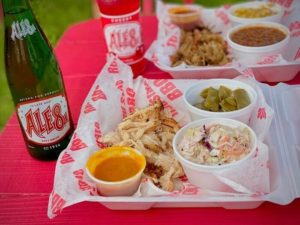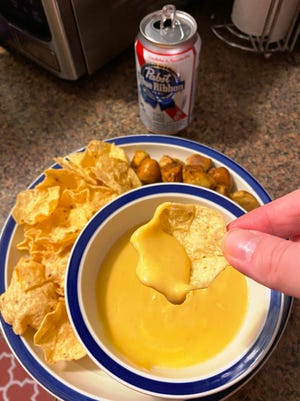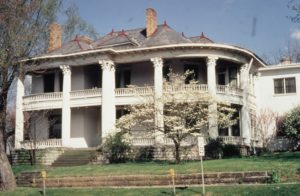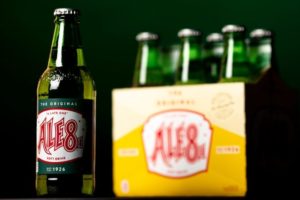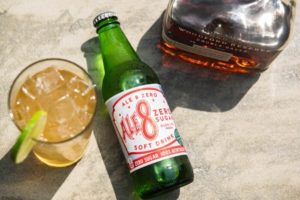Keith Pandolfi Cincinnati Enquirer
There’s a six-pack of Ale-8-One sitting on my back porch right now. And I think of it as a blessing of sorts. Back when I was growing up, there were only two places in Cincinnati where I could find the spicy, citrusy ginger ale: a drug store on Ludlow Avenue in Clifton and a gas station along Clough Pike.
The fact that I can find it in just about any grocery store in town these days is something I’m thankful for.
Ale-8 is more than just a soft drink. It’s a reminder of better times and an elixir that washes away the troubles of adulthood. Most of all, it’s a reminder of my best friend, Gordon. A friend who’s not with us anymore. Whenever I need to think good thoughts about him or mourn his loss, Ale-8 is always there. And around Thanksgiving time, I miss him more than ever. Because Thanksgiving is just as much about the families we forge through friendships as the families into which we were born.
Our friendship started on an April day in the early 1980s. Over the intercom of what was then called Forest Hills Junior School (now Mercer Elementary), Gordon was summoned to the principal’s office because his mother had just delivered a baby. He looked embarrassed as he shuffled between desks to make it to the doorway through our seventh-grade classroom. He wore a smile that was nervous and sincere; his cowlicked hair was bouncing.
The next day, we were lacing up our running shoes in the locker room for track practice and I congratulated him on his new baby brother. He pointed out that it was actually his half-brother since his father was divorced from his mother and was married to a woman named Rose. I said congratulations just the same.
Sometimes, after track practice, I would take the bus with Gordon over to his house on Collinsdale Avenue. His father, John, and his stepmother, Rose, seemed more glamorous and interesting than most of the parents I knew. John was a former writer who was born and raised just outside New Orleans. He wore pin-striped Brooks Brothers shirts with white collars and always smelled like Grey Flannel cologne. Rose drove a Karmann Ghia and once had a poem published in Esquire magazine.
Growing up in the 1980s
In those pre-streaming days, Gordon and I spent most of our time in his room listening to records and cassettes: His copy of U2’s “October,” some old Supertramp and Beatles albums he borrowed from his parents and a new album called “Songs from the Big Chair” by Tears for Fears. To this day, that album calls me back to the cold winter days we spent in Gordon’s house listening to it while plotting how we would sneak out to another party and whose older brother or sister was cool enough to buy us some beer.
Like a lot of kids of the 1980s, we watched a lot of John Hughes movies and tried to find some version of ourselves in them. I think he wanted to be the talented but troubled Rob Lowe character from “St. Elmo’s Fire” while I went so far as to wear a bandana tied around my jeans to look like Bender from “The Breakfast Club.”
Gordon grew sad sometimes. He would stay home from school for days and pretend he was sick but I later learned it was more than that. Sometimes I would check on him and we would sit by his stereo indulging his mood by listening to sad songs by the Commodores or Howard Jones. He would just sit on his bedroom floor with his chin resting in his hand thinking thoughts that seemed too deep for a kid his age. He was the sweetest, kindest and funniest kid I’d ever met. But even then I knew he was suffering from something. I just couldn’t figure out what it was.
Discovering Ale-8-One
I suppose the Ale-8 era of our lives began the same year we met. Gordon’s mother was an archaeologist who lived on a farm just outside of Winchester, Kentucky, and would often pick him and his brother, Zander, up and drive them back for the weekend. And soon after I met Gordon, I started tagging along.
The farm had been in the family for several generations and was filled with elegant old furniture, original artwork and what seemed like thousands of books. The kitchen had a cathedral ceiling and an espresso machine on which Gordon’s stepfather, a tall Italian American named John Walton, would make cappuccinos for us every morning as we read newspapers or magazines in the breakfast room.
On her back porch, Gordon’s mother kept cases of something called Ale-8-One stacked about 3 feet high. I’d never heard of Ale-8 before I met Gordon and was surprised when he told me it was a ginger ale company. I was even more surprised when he told me that his family owned it.
Ale-8 tastes more like ginger beer than ginger ale. It’s citrusy and gingery and not too sweet. As it says on every bottle, it also has “bracing pep!” It was invented by Gordon’s great-great-uncle G. Lee Wainscott in the early 1900s after he returned from Europe and fell in love with the fruity ginger beers he tasted there.
After coming up with the formula, Wainscott held a contest at the Clark County Fair for someone to come up with a name. A little girl, her name now lost, decided “A Late One,” which then meant “the latest thing,” was appropriate. I’m not sure how the idea to shorten the name to Ale-8-One came about, but the original name can still be seen in parenthesis on every bottle.
The Wainscotts had no children, so when he died in 1944, he left the company to his wife, Jane Rogers, who then left it to her brother, Frank Rogers, Gordon’s great grandfather on his mother’s side. By the time I met Gordon, his mother and her brothers ran the place and it’s now owned by Gordon’s first cousin, Fielding Rogers.
In the mornings after breakfast, Gordon and I would grab some longneck bottles of Ale-8 and head into the rolling hills of Winchester. We would make inside jokes and talk about which girls we were in love with and he would tell me stories about his early childhood in Kentucky that sounded like something out of a Flannery O’Conner story.
Sometimes we would go into the tobacco barn on the grounds and hurl corn cobs at each other until we were both bleeding and bruised then go back to the house and drink as many Ale-8s as we could. Some nights, if we could get our hands on it, we would mix in a little vodka or bourbon.
‘Don’t you forget about me’
After high school, Gordon went to Miami and I went to Ohio State. But after our sophomore year, Gordon and his girlfriend, Anne, moved in with me and my girlfriend, Karen, at our house in Columbus for the summer. Back then, you couldn’t really find Ale-8 outside of Kentucky, so he was sure to stock his car with enough of it to get us through the summer.
That August, I got a late-night phone call from my father’s girlfriend in Dayton, Kentucky. My father had died suddenly of a heart attack just hours after I’d talked to him on the phone. I started throwing things and breaking things and when I came downstairs to break more things, Gordon was standing at the bottom of the steps waiting for me. He gave me a tight hug that kept me under control and allowed me to break down and cry. He was the exact person I needed on the worst night of my life.
As we grew older, through our 20s and our 30s, we didn’t see each other much but remained close. Phone calls were rare and we would go six months or more without speaking.
A year or so after I moved to Brooklyn in my early 30s, I found a bar owned by two guys from Winchester who sold Ale-8. I would go there sometimes and get a shot of bourbon with an Ale-8 chaser. I would think about Gordon and how some friends are such a big part of who you are that you just don’t feel like yourself when they’re not around.
Times of trouble
Gordon and Anne eventually got married. I was the best man at his wedding at the Grosse Pointe Yacht Club in Michigan and I gave a terrible, bumbling toast that I regret to this day and that he gave me crap about whenever he could.
Over the years, I watched as Gordon’s life took off in all the ways I figured it would. He had the kind of shiny personality and charisma that convinced me he’d be a senator (or, well, who knows) someday. But after working on Capitol Hill for several years, he decided to get his MBA and go into international business, instead. Eventually, he and Anne had a son (they would later have a daughter, too) and moved to London where Gordon worked for IBM.
It seemed like things were going well for him. But I knew that something was wrong. Some nights while he was living in London, he would call me up drunk slurring stories of the mess he was making of his life. He tried to make them sound comical, the kind of antics a lovable lush like F. Scott Fitzgerald would get himself into. But Gordon was smarter than Fitzgerald and I feared the small suicides he was committing would eventually do him in.
He would stay out at the bars all night, skip work and spend his days in movie theaters. He once sat through three viewings in a row of “Cold Mountain” simply because he thought “it was pretty.” Though the movie was set in North Carolina, all I could think was that the scenery reminded him of Kentucky and that Kentucky is where he belonged; that Kentucky was the only thing that could save him.
By the time we reached our early 40s, he’d received a diagnosis of bipolar disorder and started taking medication. I was hoping it would be the solution to all his problems, but because he couldn’t control his drinking, it didn’t work. His behavior became even more erratic and eventually resulted in a long-term stay at a psychiatric hospital.
When I saw him afterward, he seemed better. Much better. And when I was 41, I asked him to be my best man. When he arrived in New York for the wedding, I could tell he was suffering. His skin was breaking out in what looked like hives, his hands were shaky and he seemed painfully uncomfortable. Still, I thought, this is Gordon. Gordon always pulls through.
At the wedding, he gave a trembly toast that left some of those who’d known him as the articulate charmer he once was wondering if he was OK. He wasn’t. Still, I was proud of him for just making it through. Afterward, I walked up to the podium where he was standing with tears in my eyes and bear-hugged him as tight as I could.
Last words
I wish I could say that Gordon eventually got better. But he didn’t. The drinking continued as did the dangerous behavior. He and Anne eventually separated. And while he’d always been a loving father to his kids, his illness made it increasingly difficult. Though he loved them more than anything in the world.
The last time I spoke to him was on the phone late one night when he was suffering from insomnia. He was playing old songs from when we were young and wanted me to stay on the phone with him until he fell asleep. I asked him to drive to New York the next day, but he never showed up and went to Kentucky instead. Not long after, on a late July day in 2018, I got a call from his cousin that he was dying in a Maryland hospital.
The next day, I drove there and stayed for a week. Gordon was going in and out of consciousness but he couldn’t speak. When he was alert, I would make our inside jokes and reminisce about the times we had in Kentucky and D.C. and Ohio. I would sit beside him with his teenage son, who reminded me so much of the Gordon I’d met in the early ’80s, and play Psychedelic Furs and New Order songs for him on my phone. Sometimes he would work up enough energy to smile.
On a sun-drenched afternoon in late August, we spread Gordon’s ashes among the same Winchester hills where he and I used to sit and talk about the lives we’d someday live. Later on, when the sun was setting, I went outside with a bottle of Ale-8 and watched as my daughter and Gordon’s daughter ran with a pack of kids through the same tobacco barn we used to run through as kids.
As I write this, I’m sitting in our guest room in our house in East Hyde Park. It’s the Sunday before Thanksgiving. In a moment, I will go downstairs to my back porch and grab a green bottle of Ale-8. Each sip will remind me of Gordon. Each sip will make him feel alive again. Until the bottle is empty. Until the Ale-8 is gone.
